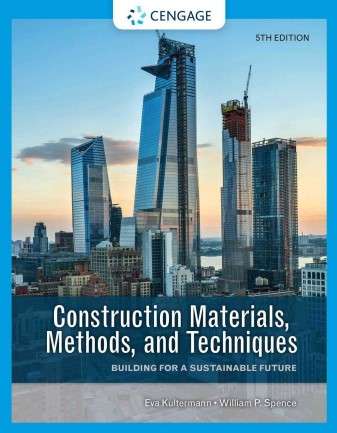The pursuit of knowledge in the realm of construction and building materials is a continuous journey, often leading individuals to search for “Building materials and construction book pdf free download” online. However, the digital landscape is often filled with outdated or unreliable resources. Instead of solely relying on free downloads, let’s explore a more nuanced and comprehensive approach to acquiring expertise in this field. This involves understanding the evolving nature of building technologies, embracing sustainable practices, and critically evaluating the information available to us, moving beyond the simple quest for a “Building materials and construction book pdf free download”.
Beyond the PDF: A Holistic Approach to Learning
While the convenience of a PDF is undeniable, a truly thorough understanding of building materials and construction demands a multifaceted approach. Consider these alternative and complementary learning avenues:
- Industry Publications: Trade magazines, journals, and online resources offer up-to-date information on new materials, construction techniques, and industry best practices.
- Professional Development Courses: Workshops, seminars, and online courses provide structured learning environments led by experienced professionals.
- Hands-on Experience: Nothing beats practical experience on a construction site. Volunteering, internships, or even simple DIY projects can significantly enhance your understanding.
- Networking: Connecting with other professionals in the field allows you to learn from their experiences and gain valuable insights.
The Evolving Landscape of Building Materials
Building materials are constantly evolving, driven by factors such as sustainability, cost-effectiveness, and performance requirements. Traditional materials like concrete and steel are being refined and augmented with innovative alternatives. Consider the following examples:
Sustainable Building Materials
- Bamboo: A rapidly renewable resource with excellent tensile strength.
- Recycled Plastics: Transforming waste into durable building components.
- Hempcrete: A bio-composite material offering excellent insulation and breathability.
High-Performance Materials
- Cross-Laminated Timber (CLT): An engineered wood product offering superior strength and fire resistance.
- Aerogels: Extremely lightweight and highly insulative materials.
- Self-Healing Concrete: Incorporating bacteria that can repair cracks, extending the lifespan of concrete structures.
A New Era of Construction Knowledge
Instead of solely searching for a “Building materials and construction book pdf free download,” adopt a broader perspective. Embrace a continuous learning approach, explore diverse resources, and stay abreast of the latest innovations. This proactive approach will ultimately provide a more valuable and comprehensive understanding of this dynamic field. Ultimately, mastering building materials and construction is a journey, not a destination.
COMPARATIVE ANALYSIS OF TRADITIONAL AND MODERN MATERIALS
The choice between traditional and modern building materials often depends on factors such as budget, aesthetic preferences, environmental considerations, and performance requirements. A direct comparison can help inform decision-making during the design and construction phases.
Material Category
Traditional Examples
Modern Examples
Advantages
Disadvantages
Structural
Wood, Stone, Brick
Steel, Concrete, Engineered Lumber (CLT, LVL)
– Readily available in some regions
– Aesthetically pleasing for certain styles
– Lower initial cost (sometimes)
– Susceptible to rot, pests, or fire (wood)
– Limited strength-to-weight ratio
– Higher maintenance requirements (stone, brick)
Insulation
Straw, Wool, Cork
Spray Foam, Fiberglass, Mineral Wool
– Renewable resources (straw, wool, cork)
– Environmentally friendly (sometimes)
– Lower R-value compared to some modern options
– Potential for moisture absorption
– Can be more difficult to install
Cladding
Wood siding, Stucco, Brick veneer
Metal siding, Fiber cement siding, Vinyl siding
– Traditional aesthetic
– Can be locally sourced
– Higher maintenance requirements
– Susceptible to weathering and damage
– May require regular painting or sealing
THE FUTURE OF CONSTRUCTION: INNOVATION AND TECHNOLOGY
The construction industry is undergoing a significant transformation driven by technological advancements. These innovations are impacting everything from design and planning to construction methods and material usage.
KEY TECHNOLOGICAL ADVANCEMENTS
– Building Information Modeling (BIM): A digital representation of physical and functional characteristics of a facility, enabling improved collaboration and coordination.
– 3D Printing in Construction: Utilizing additive manufacturing techniques to create building components or entire structures on-site.
– Robotics and Automation: Deploying robots for tasks such as bricklaying, welding, and concrete pouring, improving efficiency and safety.
– Augmented Reality (AR) and Virtual Reality (VR): Using AR and VR technologies for design visualization, construction planning, and worker training.
The ongoing evolution of building materials and construction techniques promises a future where buildings are more sustainable, efficient, and resilient. By embracing innovation and adopting a holistic approach to learning, professionals can contribute to shaping a better built environment. The quest for understanding is continuous.







